E flat major scale degree numbers 329624-What is the e flat major scale
In the key/scale of C major, C is the tonic In the key/scale of A minor, A is the tonic It's also known as the "first degree of the scale", because it is the first note Degrees of the C Major Scale Here's a scale of C major ascending, with all the degrees of the scale added D is the 2nd degree of the scale, E is the third, and so onList the scale degree numbers in the order they appear on the stability chart 1, 3, 5, 2, 6, 7, 1 (6 to 5;Scales and Keys Most music relies on key The set of pitches that a piece of music is organized around A key has two components a tonal center and some sort of scale, or set of pitches used for creating harmony and melody, a choice to use a pattern of seven notes forming a set called the major scaleThe major scale is a series of 7 notes that are a subset of the 12 notes in the chromatic

Theory Blog Modal Scales
What is the e flat major scale
What is the e flat major scale-D major E minor D minor F major A minor 8 Write the scale of E harmonic minor Ì write the key signature Ì for one octave going down Ì in crotchets Ì mark each semitone with a slur Ì complete the scale with a double bar line 9 Write the following notes as crotchets E flat A B sharp D natural Middle C 10Major Scale in Every Key A C major scale begins with a C and ends with a C It is the simplest to write in notation and demonstrate on a piano It has no sharps or flats On a piano, it is played by going from the C note on a keyboard, striking each key after it until you reach the next C—all white keys in succession from one C to the next
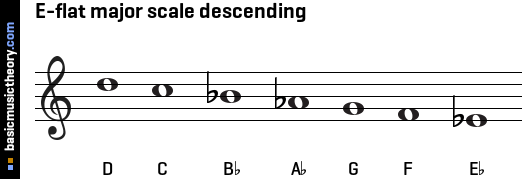


Basicmusictheory Com E Flat Major Scale
Step 1 Start by learning the 1st, 4th and 5th degrees The 1st is the tonic The 5th is 5 above the tonic and so is called the dominant The 4th is actually 5 below the tonic (hence the name subdominant – "sub" means below in Latin Get these 3 degrees firmly rooted in your mind Step 2The major scale (or Ionian mode) is one of the most commonly used musical scales, especially in Western musicIt is one of the diatonic scalesLike many musical scales, it is made up of seven notes the eighth duplicates the first at double its frequency so that it is called a higher octave of the same note (from Latin "octavus", the eighth)In the following example, G major is the relative major of E minor The letter name of a Major key's relative minor is always the same letter name as the 6th scale degree of that same major scale example The sixth note of F major is "D", hence D minor is the relative minor of the F major
EFlat Major Scale Eflat Major has three flats Bflat, Eflat, and Aflat Eflat is the key of love and devotion and is made up of the notes Eflat, F, G, Aflat, Bflat, C, D, and Eflat A famous work in the key of Eflat is Beethoven's Symphony No 3 "Eroica"Re e flat major vs c minor «Reply #1 on September 26, 08, PM » well C minor is the relative minor key to E flat major the 6th degree of every major scale is the relative minor ieBreaking down the first Roman numeral we see in the excerpt above, we can recall that the "V" represents the chord built on the fifth scale degree of the key Since this song is in AFlat major (click here for help on identifying keys), we can determine that the "V" chord is an E Flat chord Next, looking at the numbers "6" and "4," we can determine that the chord is a triad in
All of the scale degree names we've covered so far are from a major scale The natural minor scale is ever so slightly different though as the 7th degree of the scale is an interval of a tone (whole step) below the tonic instead of a semitone (half step) like the leading note For this reason a flattened 7th note is called the subtonicE flat Major scale for bass guitar presented by diagram The Eb Major displayed as fingerboard diagram for bass The root notes are in darker color The oneoctave pattern starts on the 3rd string, 6th fretFor example, in C major, the second note in the scale is D, so we can say that D is the 2nd degree of the scale of C major We always use the ascending scale to work out the degrees of a scale Every scale has seven degrees, because there are seven different notes



Keysense Key Cards User Guide Staffs



The B Flat Major Scale How To Play Form
The eight degrees of the scale may be numbered using 1 8 or Roman numerals I VIII (ie I, II, III, IV, V, VI, VII, VIII) or i viii (ie i, ii, iii, iv, v, vi, vii, viii) What makes this a major scale is the distinctive sequence of tones (whole steps) and semitones (half steps)To say these numbers out loud, we can say either "scale degree one" or "the first scale degree" For example, Sol is the fifth scale degree Make sure you can connect solfege syllables to scale degree numbers and back again Scale Degree Names A final set of labels can be called scale degree namesEflat major scale The Solution below shows the Eb major scale notes, intervals and scale


Making Chords From Scales The Ethan Hein Blog



A Flat Major Scale All About Music Theory Com
Notice that the sounded notes and fingerings are the same for both the Fsharp and Gflat major scales, only the names of the notes change This is also true for Csharp relative to Dflat major What we are talking about is called enharmonic spelling This is when one scale has the ability to be written in two different key signaturesPentatonic scales have five notes The blues scale is the minor pentatonic plus the flat fifth Major pentatonic scale Joyful;10 a flat major


Unlocking The Mysteries Of Diatonic Harmony Art Of Composing



Major Scales Scale Degrees And Key Signatures Open Music Theory
From C ♯ to D is a halfstep, which is what we need between scale degrees 3 and 4 From D to E is already a wholestep, so no problem there, but from E to F is only a halfstep and it needs to be a wholestep, so F must be raised to an F ♯ Scale degrees 6 and 7 need to be separated by a wholestep, thus G has to be raised to a G ♯Parallel Key of B flat Major (or homonymous key) is B flat minor scale, here is the B flat harmonic minor scale Leading Tone of B flat Major The leading Tone of B flat Major is A , because A is the degree VII and is distant to a seventh major of the tonic, or an half step (semitone ) lower than the tonic)Bflat major scale The Solution below shows the major scale notes, intervals and scale degrees on the piano, treble clef and bass clef The Lesson steps then explain how to identify the Bflat major scale note interval positions, choose the note names and scale degree names For a quick summary of this topic, have a look at Major scale



E Flat Major Scale All About Music Theory



How To Tell If The Music Is Major Or Minor School Of Composition
Parallel Key of E flat Major (or homonymous key) is E flat minor scale, here is the E flat harmonic minor scale Leading Tone of E flat Major The leading Tone of E flat Major is D , because Dis the degree VII and is distant to a seventh major of the tonic, or an half step (semitone ) lower than the tonic)1 So as you can see, there are no sharp or flat degrees in the major scale 1 2 3 4 5 6 7 We can also see that some degrees in the major scale are a half step apart and others a whole step apart 1 2 = Whole step 2 3 = Whole step 3 4 = Half step 4 5 = Whole step 5 6 = Whole stepEflat major (or the key of Eflat) is a major scale based on E ♭, with the pitches E ♭, F, G, A ♭, B ♭, C, and DIts key signature has three flats B, E, and AIts relative minor is C minor, while its parallel minor is E ♭ minor (or enharmonically D ♯ minor) The Eflat major scale is


He Kendallhunt Com Sites Default Files Uploadedfiles Kendall Hunt Content Higher Education Uploads Gerhold 2e Chapter6 Pdf



Discovering Minor Chord Progressions Musical U
The key of E flat has 3 flats , Eb and Ab (The order of the first 4 flats spells the word BEAD, so we have the first 3 letters of the word here) Understand the Eb Chord from the Eb Scale Knowing the E flat major scale on piano not only helps you to play that and understand the key signature but you can also understand and know the EbMajor chord with a major 7 7th chord Other Notations Ebmajor7 EbM7 EbMaj7 Chord Construction R = Eb Eb major interval = G (scale degree = 3rd) G minor interval = (scale degree = 5th) major interval = D (scale degree = 7th) Ebmajor7 on other instruments Ebmajor7 piano Ebmajor7 guitar Ebmajor7 ukulele Ebmajor7 mandolin Ebmajor7 banjoEb Guitar Chord and alternate tunings 8 chord voicings, charts and sounds Chord notes and structure Eb G (R 3 5)



13 Tonic Triads



The Foundations Scale Steps And Scales
D is the 2nd degree of the scale, E is the third, and so on Notice that both Cs are called the "1st degree" even though the last one is higher than the first It doesn't matter which register (high or low) the notes are in the name is the sameEflat major is a major scale based on E♭, with the pitches E♭, F, G, A♭, B♭, C, and D Its key signature has three flats B, E, and A Its relative minor is C minor, while its parallel minor is E♭ minor The Eflat major scale is7 to 1) Define resolution tones Notes which the active tones move towards Define diatonic



Major Scales Scale Degrees And Key Signatures Open Music Theory



Eb Major Scale Charts For Violin Viola Cello And Double Bass
EFlat Major Scale Eflat Major has three flats Bflat, Eflat, and Aflat Eflat is the key of love and devotion and is made up of the notes Eflat, F, G, Aflat, Bflat, C, D, and Eflat A famous work in the key of Eflat is Beethoven's Symphony No 3 "Eroica"The root note of the Eb ("E Flat") Major scale is 'Eb' Let's take the interval sequence that we just looked at, and present it in a more visually engaging way With this information, you should be able to try out the Major scale yourself, by playing the above interval sequence on one stringD major E minor D minor F major A minor 8 Write the scale of E harmonic minor Ì write the key signature Ì for one octave going down Ì in crotchets Ì mark each semitone with a slur Ì complete the scale with a double bar line 9 Write the following notes as crotchets E flat A B sharp D natural Middle C 10



What Are The Technical Names In Music What Do They Mean School Of Composition



Music Scale Degree Names
The E flat Major consists of seven notes These can be described as intervals, as seminotes or steps on the guitar fingerboard, written as 2 2 1 2 2 2 1 from the first note to the next octave The scale can be played on the guitar from different starting positions in which Eb functions as the root toneEflat major (or the key of Eflat) is a major scale based on E ♭, with the pitches E ♭, F, G, A ♭, B ♭, C, and DIts key signature has three flats B, E, and AIts relative minor is C minor, while its parallel minor is E ♭ minor (or enharmonically D ♯ minor)For example, the key of Dflat has 5 flats and the key of Csharp has 7 sharps Just as the pitch Dflat is the same as Csharp, so are the sets of pitches in their respective keys If we look at each note in the Dflat and Csharp major scales, we can see that each scale degree is enharmonically equivalent
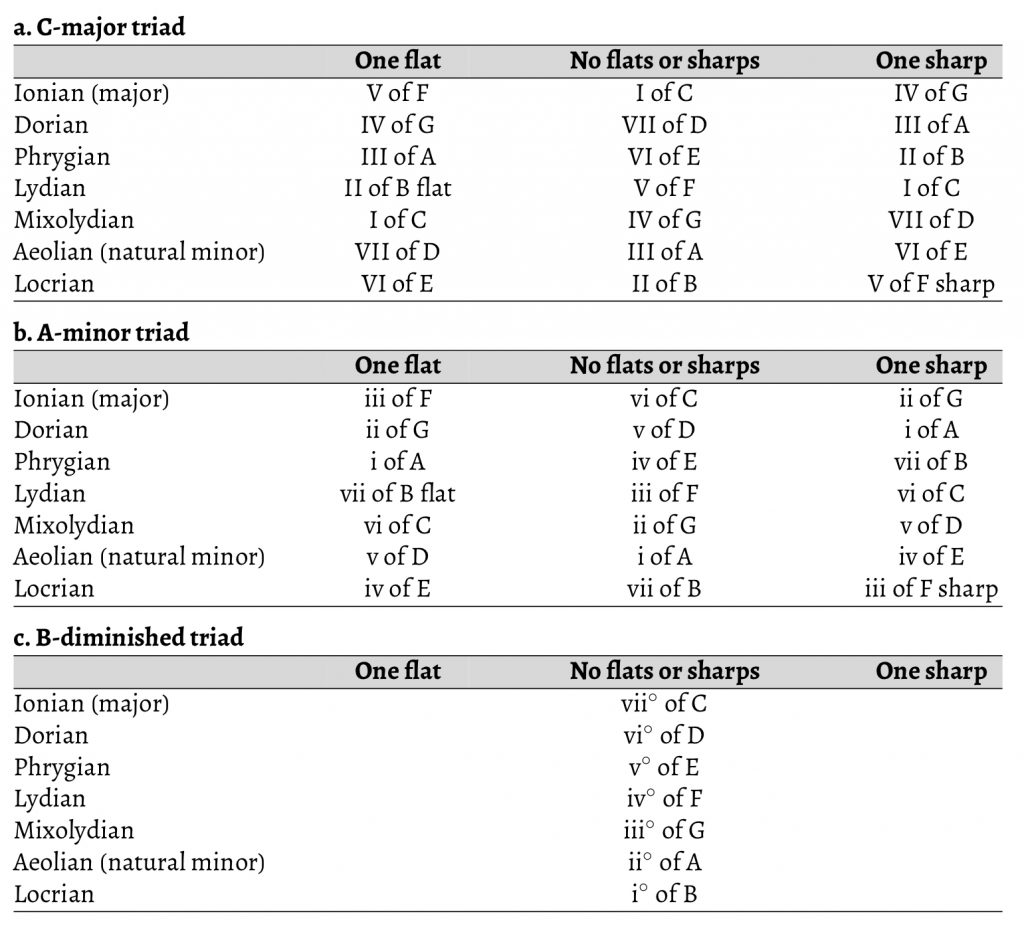


When And How Are Modulations Diatonic Integral


13 Triads Fundamentals Function And Form
The E flat major scale consists of the following notes Eb F G Ab C D There are 7 different notes in the scale When the scale is played, the first note is usually repeated at the end, one octave higherThe E Flat Major Scale In this lesson, we learn how to play the E flat major scale This scale consists of the pitches E♭, F, G, A♭, B♭, C and D Its key signature has three flats, E♭, A♭and B♭ The relative minor of E flat major is C minorMajor 2nd – The 2nd note of the scale is C Major 3rd – The 3rd note of the scale is D Perfect 4th – The 4th note of the scale is Eb Perfect 5th – The 5th note of the scale is F Major 6th – The 6th note of the scale is G Major 7th – The 7th note is A Perfect 8th – The 8th note is
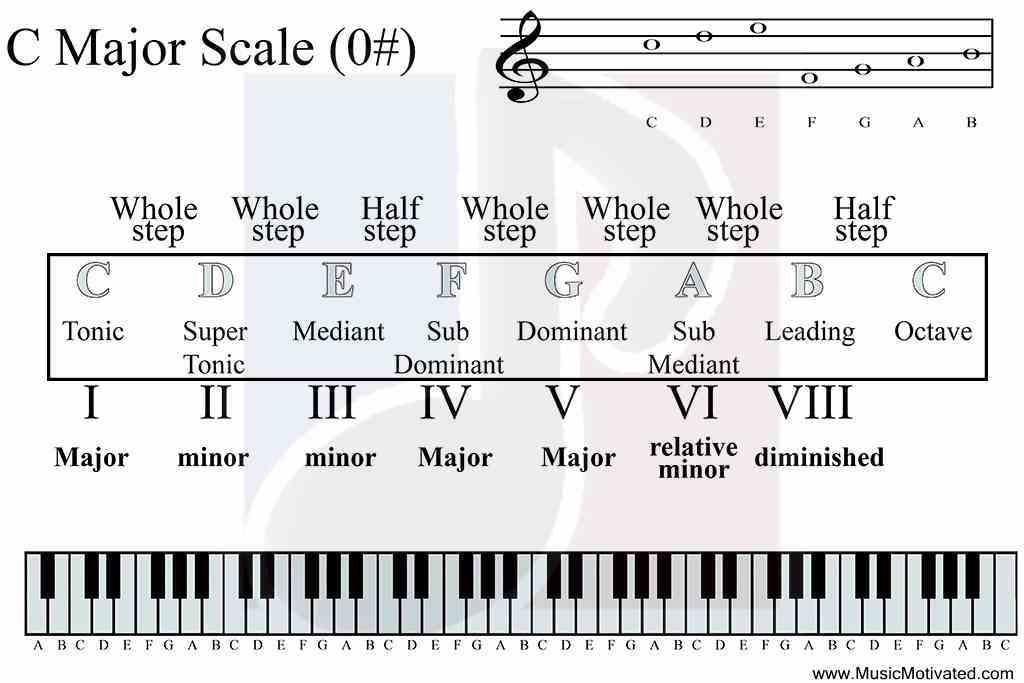


What Are Music Scales



What Is The Blues Scale Learn How To Play Major And Minor Blues Scales 21 Masterclass
Widely used in world and folk music Major scale with 4th and 7th removed Same pitches as A minor pentatonic Here's a blog post about playing pentatonics on guitar Minor pentatonic scale Widely used in rockTo transform a major scale into minor, just lower the third and the sixth by a semitone For example, C major consists of the notes C, D, E, F, G, A and B To change it into a minor scale, lower its third from E to E flat, and its sixth from A to A flat C major transformed into C minor by flattening degrees 3 and 605 e flat major;


8 Major Keys And Key Signatures Fundamentals Function And Form



Glossary Of Musical Terms Musicnotes Now
The Nashville Number System Manage chord progressions easily with this useful tool The Nashville Numbering System is a method of denoting chord letter symbols by using roman numerals, and it's one of the most important concepts taught in guitar lessons , really useful when dealing with chord progressionsEflat major (or the key of Eflat) is a major scale based on E ♭, with the pitches E ♭, F, G, A ♭, B ♭, C, and DIts key signature has three flats B, E, and AIts relative minor is C minor, while its parallel minor is E ♭ minor (or enharmonically D ♯ minor)Eflat major scale The Solution below shows the Eb major scale notes, intervals and scale degrees on the piano, treble clef and bass clef The Lesson steps then explain how to identify the Eflat major scale note interval positions, choose the note names and scale degree names For a quick summary of this topic, have a look at Major scale All Keys On 1 page


2



Music Scale Degree Names
Scale Number Music Theory To use scalenumber tabs or the nashville number system you need to be able to 'play in a key' which just means knowing the major or minor scale All of the necessary theory is explained in the app, but below are some sheets which might be useful if you already play an instrument03 d flat major;The Eflat ionian chord I is the Eb major chord, and contains the notes Eb, G, and This tonic chord's root / starting note is the 1st note (or scale degree) of the Eflat ionian mode The roman numeral for number 1 is 'I' and is used to indicate this is the 1st triad chord in the mode It is in upper case to denote that the chord is a major chord


Q Tbn And9gcrs1coo46c5rg Gay37i8zzxyyimtk9nw7ocdfkmagpf8dtlt Usqp Cau
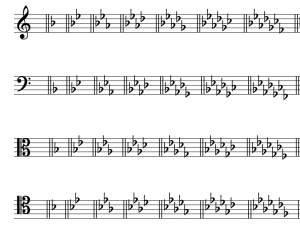


Major Scales Scale Degrees And Key Signatures Open Music Theory
From C ♯ to D is a halfstep, which is what we need between scale degrees 3 and 4 From D to E is already a wholestep, so no problem there, but from E to F is only a halfstep and it needs to be a wholestep, so F must be raised to an F ♯ Scale degrees 6 and 7 need to be separated by a wholestep, thus G has to be raised to a G ♯The Nashville Number System Manage chord progressions easily with this useful tool The Nashville Numbering System is a method of denoting chord letter symbols by using roman numerals, and it's one of the most important concepts taught in guitar lessons , really useful when dealing with chord progressionsThe interval from E flat to F is a Major 2nd From E flat to G is a Major 3rd From E flat to A flat is a Perfect 4th From E flat to B flat is a Perfect 5th From E flat to C is a Major 6th From E flat to D is a Major 7th From E flat to E flat is a Perfect octave If the pitches lie within a major scale, then the intervals of a 1st, 4th, 5th, and 8th are called "Perfect" The 2nd, 3rd, 6th, and 7th are called major What about pitches that are not within a major scale?
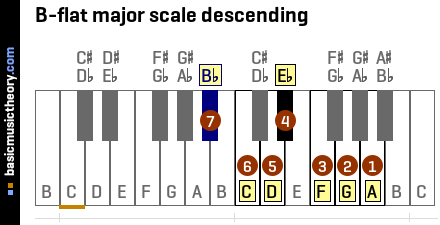


Basicmusictheory Com B Flat Major Scale



E Flat Major Scale All About Music Theory
Introduction to the two octave Eflat major scale Introduction to the two octave Eflat major scaleEbmaj7 stands for E flat major seventh Theory The Eb major seventh chord is constructed with a root, a major third An interval consisting of four semitones, the 3rd scale degree , a perfect fifth An interval consisting of seven semitones, the 5th scale degree and a major seventh An interval consisting of eleven semitones, the 7th scale degree



The 16 Most Important Scales In Jazz Updated Learn Jazz Standards
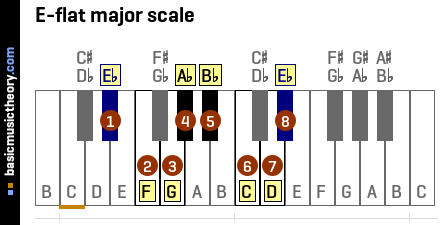


Basicmusictheory Com E Flat Major Scale



What Are The Technical Names In Music What Do They Mean School Of Composition



E Flat Major Scale Piano Music Theory



E Flat Major Scale All About Music Theory



A Flat Major Scale All About Music Theory Com



Music Theory Scale Degrees



Solfege And Scale Degrees David Kulma



The E Flat Major Scale On Piano Treble And Bass Clef



Efficient Exercises To Learn Scales Music Practice Theory Stack Exchange


Enharmonic Handling Scale Structure Www Larips Com



Glossary Of Musical Terms Musicnotes Now


Borrowed Chords How To Spot Play Over Them



Basicmusictheory Com E Flat Major Scale



The Ultimate Guide To The Dorian Mode Musical U


9 Minor Keys And Key Signatures Fundamentals Function And Form



Relative Key Wikipedia



E Flat Major Scale All About Music Theory



How To Tell If The Music Is Major Or Minor School Of Composition


The E Flat Minor Scale Eb Minor Scales On Piano Treble And Bass Clef Natural Melodic Harmonic Minor Scale


8 Major Keys And Key Signatures Fundamentals Function And Form



What Are The Technical Names In Music What Do They Mean School Of Composition



Chords Roman Numerals And Inversions Ruth Pheasant Piano Lessons


Http Blogs Ubc Ca Elizabethriegert Files 17 03 Van Tech Music Theory Ib 1 Pdf
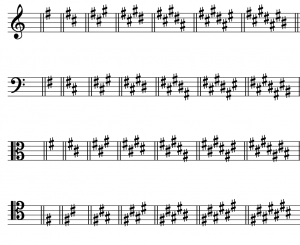


Major Scales Scale Degrees And Key Signatures Open Music Theory



The Ultimate Guide To The Circle Of Fifths Musical U



Chords Roman Numerals And Inversions Ruth Pheasant Piano Lessons


The E Flat Major Scale On Piano Treble And Bass Clef


Q Tbn And9gctxnpsqxnvatfsw8oblol65tfyl7gb4mdsmtqqxvyc05oihbk E Usqp Cau


Major 7th Chord Progression Ideas Maj7 Function



Theory Blog Modal Scales



Diatonic Chords Of E Flat Major Scale Piano Music Theory
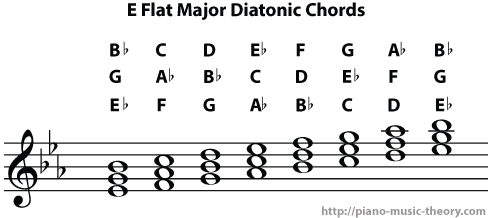


Diatonic Chords Of E Flat Major Scale Piano Music Theory



C B Flat And E Major Scales 10 Weeks Of Solfa Program Video 2 Youtube


Borrowed Chords How To Spot Play Over Them


Unlocking The Mysteries Of Diatonic Harmony Art Of Composing



What Are The Technical Names In Music What Do They Mean School Of Composition


Unlocking The Mysteries Of Diatonic Harmony Art Of Composing
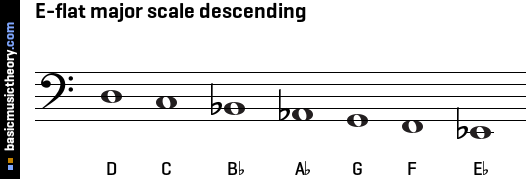


Basicmusictheory Com E Flat Major Scale


How Do Key Signatures Work The Ethan Hein Blog



What Are The Technical Names In Music What Do They Mean School Of Composition


Q Tbn And9gcqfd0ehufcqxmehxxh3aphw2yxyq0 5by1taq9xo80ebe80e2w5 Usqp Cau



Learning The Major Chords How To Read The E Flat Major Chord
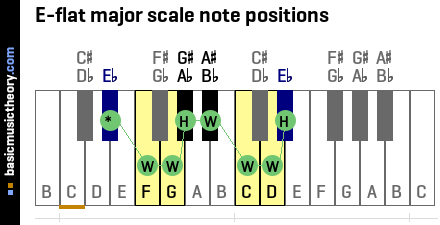


Basicmusictheory Com E Flat Major Scale



Intervals Scales Chords Ppt Download



E Flat Major Pentatonic Scale For Bass Constantine Guitars



Major Scale Wikipedia


The Minor Scales And Chords Portland Piano Lab



B Flat Major Scale Piano Music Theory


Scales And Emotions The Ethan Hein Blog


Minor Key Signatures



Eb Major Scale Charts For Violin Viola Cello And Double Bass



What Are The Technical Names In Music What Do They Mean School Of Composition



The Circle Of Fifths Explained Ledgernote



A Flat Major Scale All About Music Theory Com


Q Tbn And9gcqihvrccctbdcoshiyubwby9f0d08ttzy5dkbu5ljfvs Zlbngj Usqp Cau


Unlocking The Mysteries Of Diatonic Harmony Art Of Composing



E Flat Major Wikipedia



Sound Patterns Chapter 2 Vocabulary



5 Most Used Chord Progressions In Edm Top Music Arts


He Kendallhunt Com Sites Default Files Uploadedfiles Kendall Hunt Content Higher Education Uploads Gerhold 2e Chapter6 Pdf



Solfege And Scale Degrees David Kulma


The B Flat Major Scale How To Play Form



A Flat Major Scale All About Music Theory Com



Basicmusictheory Com E Flat Major Scale



Roman Numeral Analysis In Music Musicnotes Now



Major Scale Wikipedia



What Are The Technical Names In Music What Do They Mean School Of Composition


9 Minor Keys And Key Signatures Fundamentals Function And Form
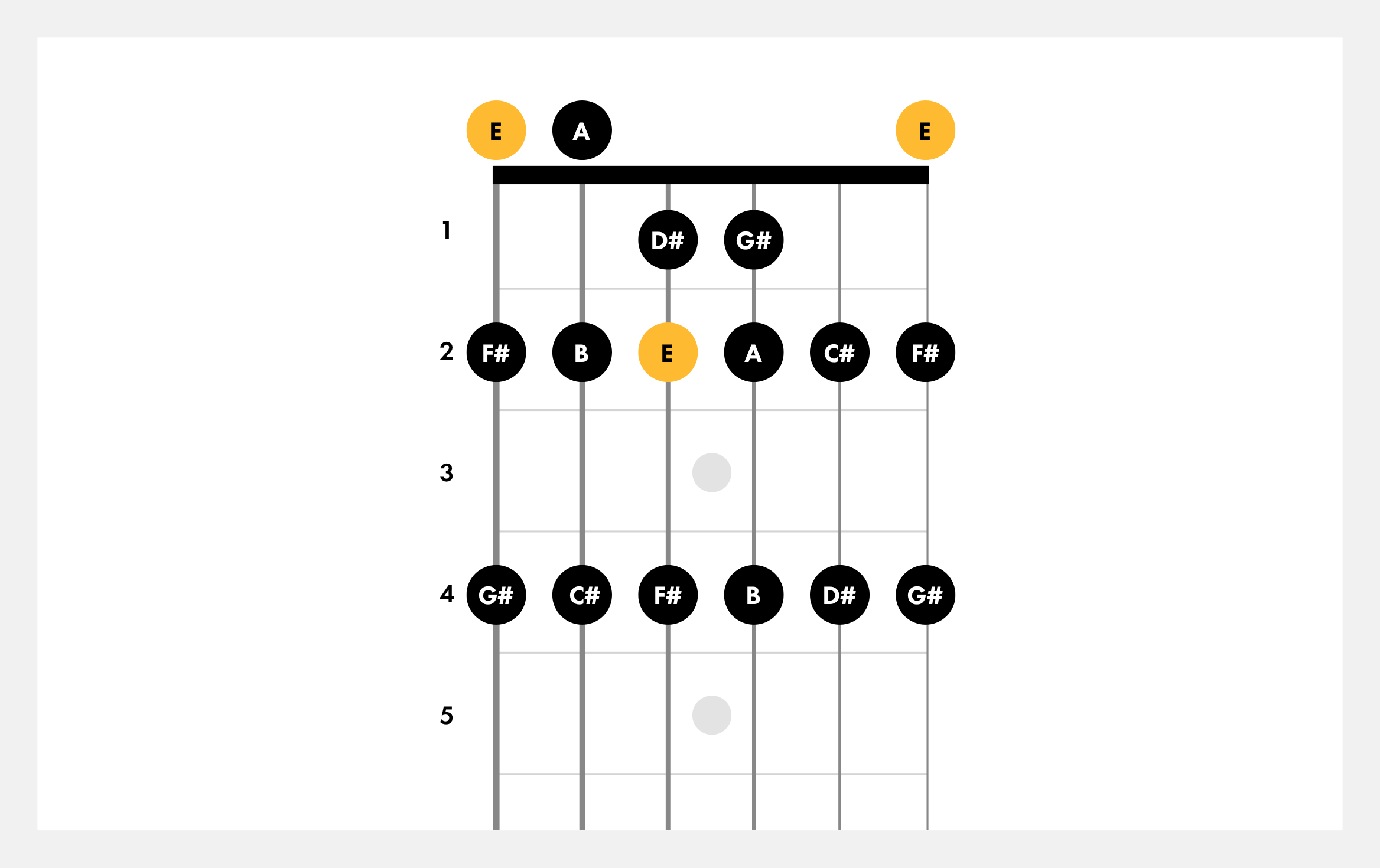


Learn How To Play The E Major Scale On Guitar Fender


8 Major Keys And Key Signatures Fundamentals Function And Form



Roman Numeral Analysis In Music Musicnotes Now


The B Flat Major Scale How To Play Form


The E Flat Major Scale On Piano Treble And Bass Clef
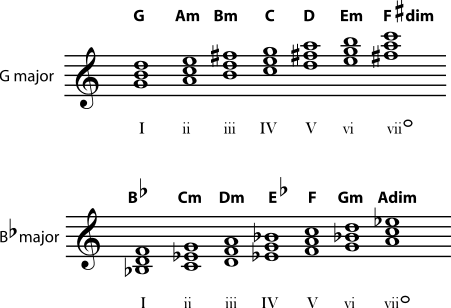


5 5 Beginning Harmonic Analysis



Eb Major Scale Charts For Ukulele


コメント
コメントを投稿